Unique Chinchorro Burial Tradition For All And Ancient Egyptians Who Mummified Kings And Nobles Only
A. Sutherland - AncientPages.com - Mummies have long fascinated the world. Mummification is the great ancient tradition and has been a worldwide practice for over 7,000 years.
How were the first techniques of mummification discovered?
The internal organs were removed through the incision and then cleaned, dried, wrapped and placed in four canopic jars. Image via History In An Hour
Millennia ago, in the Middle East, the head were separated from the rest of the dead body and facial features of the dead were modeled on the skull.
It was not mummification as we know it today from archaeological evidence but it was a desire to preserve the human remains and facial features.
Over the centuries, numerous beliefs and funeral practices in many cultures were combined to preserve the posthumous existence of the dead.
In his book "The Golden Branch," James George Fraser wrote that in many cultures, there was no doubt that the aging of the body and its postmortem decay can harmfully affect the soul that inhabits it. It was therefore necessary to prevent changes that could lead to the death of the soul.
The Chinchorro culture that lived on the coast of present day northern Chile and southern Peru, created the earliest known mummies.
A Chinchorro mummy - at San Miguel de Azapa Museum in Arica, Chile; Arica is often referred to as the driest place on Earth, but locals say that is changing. Photograph: Vivien Standen/Washington Post
They preserved all their dead using elaborate techniques. The dead remained with the living and symbolized as the link between the dead and the living.
Recent research indicates that the tradition of embalming in Egypt is much older than previously thought and can match the age of Chinchorro culture.
The Egyptians constantly refined their mummification process, and by the New Kingdom period, they had perfected their techniques, so even today Roman Catholic Church follows them when preserving the bodies of deceased popes.
See also:
Mystery Of The Chinchorro Civilization And The World’s Oldest Mummies
Canopic Jars: Funerary Tradition Of Ancient Egyptians And Their Beliefs In Afterlife
Viking Burial Rituals: High Ancient Funeral Pyre Reflected High Social Status
To the ancient Egyptians, death was the next step in a great process of continuation of life – afterlife. But to participate in it, the body had to be properly preserved.
The Egyptians were wrapping their dead in linen as early as c.3400 BC, with linen impregnated with resin or sometimes with plaster to preserve the contours of the body. Around 2600 BC, they began to remove the internal organs (except for the kidneys) to prevent decomposition. The brain, which was never preserved, was removed through the nose with an instrument that looked like a hooked metal rod.
For the next three millennia, the Egyptians refined and perfected their techniques and by New Kingdom times, about 1570-1070 BC, they became the world’s most skilled and famous practitioners of mummification.
It was long believed that the Chinchorro people of Chile preserved bodies before the Egyptians. First, now researchers have been able to analyze ancient Egyptian graves at Mostagedda, Badari and Hierakonpolis and the results indicate that buried bodies were subjected to embalming treatments before being deposited in the grave.
Dating of these burials to the fifth millennium BC makes them the contemporaries of the Chinchorro mummy of South America.
However, the Chinchorro burial practices were unique in many ways.
Bernardo Arriaza, an expert on the mummies, which were first discovered in the Atacama desert in 1917, wrote that “…whereas the Egyptians considered only kings and other exalted citizens worthy of mummification, the Chinchorro accorded everyone in the community, regardless of age or status, this sacred rite…”.
Without pottery farming and literacy, the Chinchorro people were considered as primitive, but interestingly, they possessed complex mummification techniques that confirm they were a highly sophisticated culture.
From c.6000 BC, the Chinchorro began to 'rebuild' their dead, with bodies carefully removed flesh and the skin, brain and internal organs removed. The bones were dried with hot ashes before the whole lot was then reassembled using twigs for reinforcement bound tightly with reeds.
Finally, a layer of ash paste was applied over the body, a clay mask used to cover the face and a wig made of human hair was placed on the head.
At first, only infants and children, decorated with vibrant colors and diverse clay figurines. At its peak around 3000 BC, Chinchorro mummified men, women, and children of all ages and in the final days of this culture, the mummies bore only mud masks. The mummies were apparently not buried but were stood upright in a visible location in the camp, perhaps to indicate the group’s lineage from a common ancestor.
In addition, not all members of Chinchorro bands were mummified; some were buried in simple graves. Such graves have been found on elevated terraces and containing one or more individuals who may have been family groups.
Written by – A. Sutherland AncientPages.com Staff Writer
Copyright © AncientPages.com All rights reserved. This material may not be published, broadcast, rewritten or redistributed in whole or part without the express written permission of AncientPages.com
Expand for referencesReferences:
Andrews C. Egyptian Mummies: Revised Edition
Stein R. L. Stein P. Anthropology of Religion, Magic, and Witchcraft
Sciencing - In Ancient Egypt, What Did They Put in a Mummy's Stomach?
More From Ancient Pages
-
 First Genetic Map Of People Of Ireland Is Presented By Irish, British And American Researchers
Archaeology | Dec 15, 2017
First Genetic Map Of People Of Ireland Is Presented By Irish, British And American Researchers
Archaeology | Dec 15, 2017 -
 Sacred Artifact With Mystical Powers – The Discovery – Part 2
Artifacts | Apr 26, 2019
Sacred Artifact With Mystical Powers – The Discovery – Part 2
Artifacts | Apr 26, 2019 -
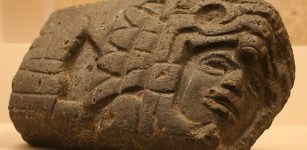 Sociopolitical Organization In Mesoamerica Influenced Developed Writing Systems And Communication
Archaeology | Feb 16, 2022
Sociopolitical Organization In Mesoamerica Influenced Developed Writing Systems And Communication
Archaeology | Feb 16, 2022 -
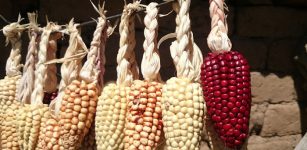 Agriculture In North America Led To Changes In Age-Independent Mortality
Archaeology | Jan 24, 2023
Agriculture In North America Led To Changes In Age-Independent Mortality
Archaeology | Jan 24, 2023 -
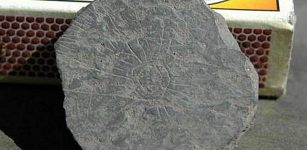 More Than 300 ‘Sun Stones’ Dated To Stone Age Discovered On Danish Island Of Bornholm
Archaeology | Dec 20, 2017
More Than 300 ‘Sun Stones’ Dated To Stone Age Discovered On Danish Island Of Bornholm
Archaeology | Dec 20, 2017 -
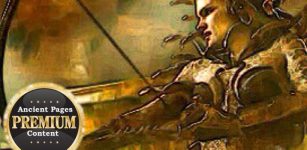 Tuatha de Danann – ‘Gods’ Of Ireland And The Myth Of Danae And Zeus – Could The Early Irish Celts Have Ties To Ancient Greece?
Celtic Mythology | Mar 28, 2017
Tuatha de Danann – ‘Gods’ Of Ireland And The Myth Of Danae And Zeus – Could The Early Irish Celts Have Ties To Ancient Greece?
Celtic Mythology | Mar 28, 2017 -
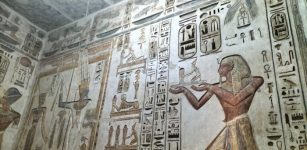 The Gold Compartment At Habu Temple Looks Magnificent After Restoration
Archaeology | Aug 20, 2022
The Gold Compartment At Habu Temple Looks Magnificent After Restoration
Archaeology | Aug 20, 2022 -
 Spir Mountain Cairns: Prehistoric Ancient Monuments To The Dead In Northern Sweden
Featured Stories | Jan 12, 2022
Spir Mountain Cairns: Prehistoric Ancient Monuments To The Dead In Northern Sweden
Featured Stories | Jan 12, 2022 -
 On This Day In History: Fatal Fire Broke Out In Tre Kronor “Three Crowns” Castle, Stockholm, Sweden – On May 7, 1697
News | Dec 7, 2021
On This Day In History: Fatal Fire Broke Out In Tre Kronor “Three Crowns” Castle, Stockholm, Sweden – On May 7, 1697
News | Dec 7, 2021 -
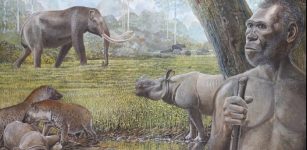 Loss Of Rainforests, Grasslands In Southeast Asia Caused Extinction Of Megafauna And Ancient Humans
Archaeology | Oct 10, 2020
Loss Of Rainforests, Grasslands In Southeast Asia Caused Extinction Of Megafauna And Ancient Humans
Archaeology | Oct 10, 2020 -
 Did Human Nature’s Dark Side Help Us Spread Across The World?
Archaeology | Nov 25, 2015
Did Human Nature’s Dark Side Help Us Spread Across The World?
Archaeology | Nov 25, 2015 -
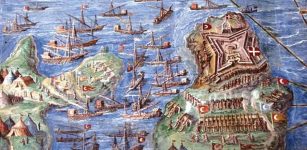 On This Day In History: Great Siege of Malta: Ottoman Forces Made Attempt To Conquer Malta And Failed – On May 18, 1565
News | May 18, 2016
On This Day In History: Great Siege of Malta: Ottoman Forces Made Attempt To Conquer Malta And Failed – On May 18, 1565
News | May 18, 2016 -
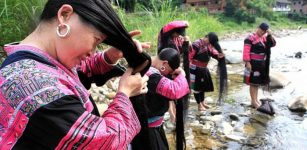 Huangluo: Long-Hair Village Where Women Don’t Cut Their Hair – A 2,000-Year-Old Tradition Of The Yao People
Ancient Traditions And Customs | Jun 18, 2017
Huangluo: Long-Hair Village Where Women Don’t Cut Their Hair – A 2,000-Year-Old Tradition Of The Yao People
Ancient Traditions And Customs | Jun 18, 2017 -
 Did Two Daughters Of Akhenaten Rule Together Under One Name Before Tutankhamun?
Archaeology | May 1, 2019
Did Two Daughters Of Akhenaten Rule Together Under One Name Before Tutankhamun?
Archaeology | May 1, 2019 -
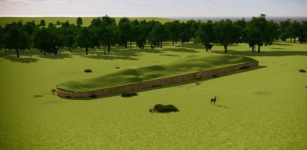 Ancient DNA Reveals The World’s Oldest Family Tree
Archaeology | Dec 27, 2021
Ancient DNA Reveals The World’s Oldest Family Tree
Archaeology | Dec 27, 2021 -
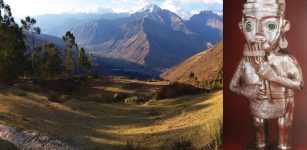 Ancient Underground Tombs And Lightening God In Peru – Complex Concepts Of Death And Renewal Revealed
Archaeology | May 22, 2018
Ancient Underground Tombs And Lightening God In Peru – Complex Concepts Of Death And Renewal Revealed
Archaeology | May 22, 2018 -
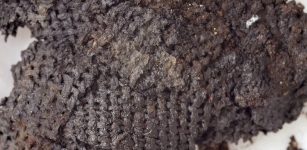 Discovery Of Stone Age Textiles Sheds New Light On The History Of Clothes Making
Archaeology | Nov 9, 2021
Discovery Of Stone Age Textiles Sheds New Light On The History Of Clothes Making
Archaeology | Nov 9, 2021 -
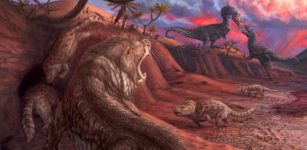 Extremely Rare Jurassic Fossils Discovered Near Lake Powell, Utah
Fossils | Oct 16, 2023
Extremely Rare Jurassic Fossils Discovered Near Lake Powell, Utah
Fossils | Oct 16, 2023 -
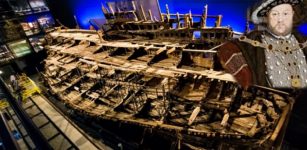 Artifacts From King Henry VIII’s Warship The Mary Rose – Analyzed
Archaeology | Apr 28, 2020
Artifacts From King Henry VIII’s Warship The Mary Rose – Analyzed
Archaeology | Apr 28, 2020 -
 Njord: Norse God Of The Seas And Seafarers And His Unhappy Marriage To Skadi
Featured Stories | Jul 10, 2018
Njord: Norse God Of The Seas And Seafarers And His Unhappy Marriage To Skadi
Featured Stories | Jul 10, 2018




